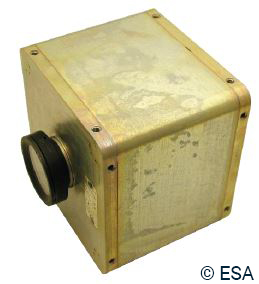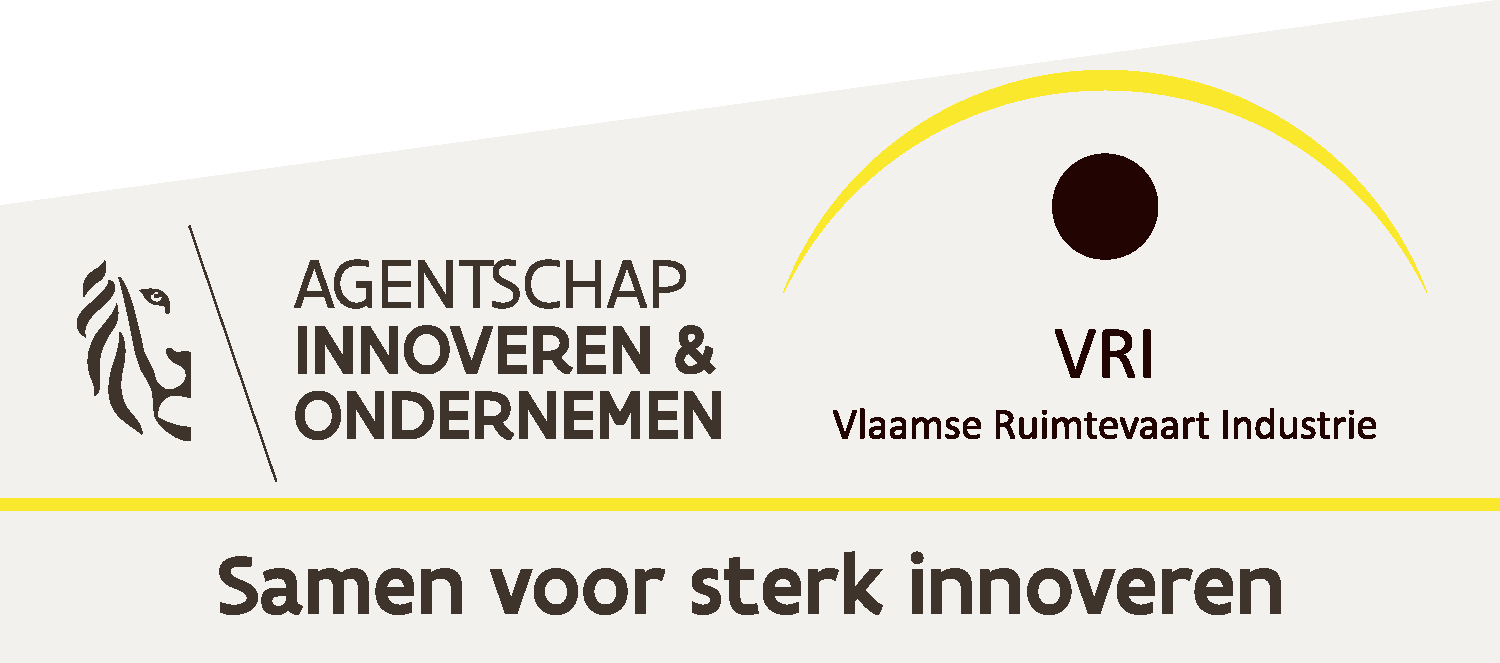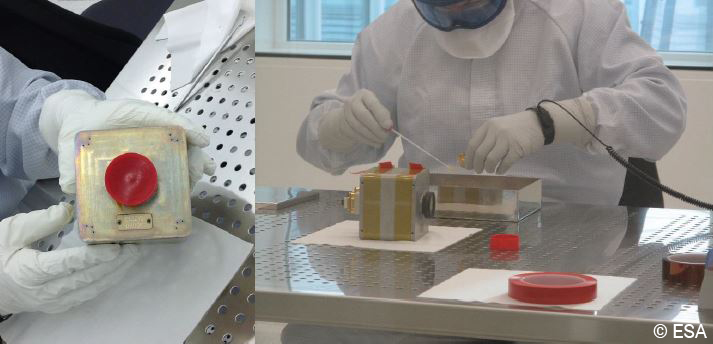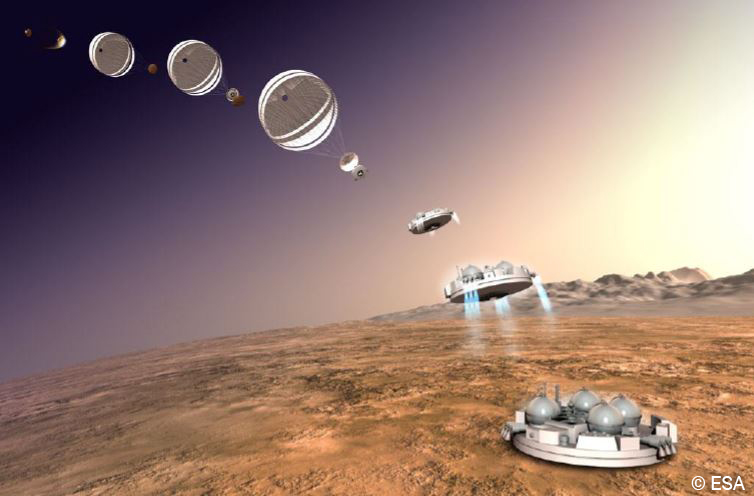For the first time since that start of the Space Activities in OIP Sensor Systems, hardware fully developed by OIP will set ‘foot’ on a non-terrestrial surface, i.e. the surface of Mars! So far, approximately 10 ton of terrestrial hardware is ‘resting’ on Mars. From October 2016 onwards 600kg will be added by the Schiaparelli, Exomars’ Entry, Descent & Landing Demonstration Module, from which 616g were prepared in the OIP cleanrooms.
DECA – an ordinary camera in extraordinary environment …
The DEscent CAmera (DECA) is a stand-alone small digital camera with addressable CMOS array detector providing B&W images. The camera objective has a focal length of 6,65 mm, the FOV is 60° x 60° square and it will have the ability to take sharp images between 3m and infinity. This camera has a mass of 0.6 kg, low power consumption of less than 3W (average) and dimensions of about 9 × 9 × 9 cm³, with the ability to capture 15 images at 1,5s intervals and store these in a local memory. After acquisition, the image data can be received from the camera.
DECA is the re-named flight spare of the VMC (Visual Monitoring Camera), which flew on the Herschel spacecraft (2009).
DECA was designed, built and tested by OIP Sensor Systems, as subcontractor to Thales Alenia Space, Cannes, France. The flight model camera was successfully integrated on the Herschel Composite and provided nice images of the separation between the two spacecrafts of the Herschel Planck mission.
OIP was responsible for the development of the visual monitoring camera (Phase C/D).
DECA – Made ready for Exomars2016 …
The flight spare camera was provided by ESA to serve as Descent, Landing Camera onboard the EDM. A delta-qualification was performed by ESA staff on the camera to investigate and demonstrate that the camera – designed to monitor separation of two spacecrafts – can withstand the landing in harsch conditions. All successful. The ESA planetary protection prepared and cleaned the camera to meet the stringent planetary protection requirements (to prevent microbes hitchhiking to Mars), as the camera will land and stay on Mars.
The Exomars 2016 Descent Camera Team is led by ESA’s Space Scientist Detlef Koschny.
ESA/ESTEC, Noordwijk, The Netherlands | Tel: +31 71 565 4828 | detlef.koschny @ esa.int
DECA – Zooming in on the Martian surface during descent …
The DEscent CAmera (DECA) on Schiaparelli (ExoMars’ 2016 Entry, Descent & Landing Module) will image the landing site as it approaches the surface, as well as providing a measure of the Martian atmosphere’s transparency and to support the generation of a 3-D topography model of the surface of the landing region for the Exomars 2018 mission.
About Exomars
The Exomars missions are a joint endeavor between the European Space Agency (ESA) and the Russian Federal Space Agency (Roscosmos) to search for traces of life on the Red Planet by investigating the Martian environment and demonstrating new technologies paving the way for a future Mars sample return mission in the 2020’s.
About OIP
OIP Sensor Systems was founded in 1919 and has since always played a pioneering role in emerging electro-optic technologies with main activities in defense market, and since the early 1980’s also in the space market, with instruments flying on Spacelab, XMM, Cluster II, Mars-Express, Venus-Express, Integral, Rosetta, Envisat, Meteosat, Meteosat Second Generation, Herschel-Planck, ExoMars, the Proba-missions (Proba-1, Proba-II and Proba-V).
For more information
- Contact Lieve De Vos, Director Space Department, +32 55 333 836, e-mail ldv@oip.be
- OIP Sensor Systems, Westerring 21, B-9700 Oudenaarde, www.oip.be



Leave a Reply